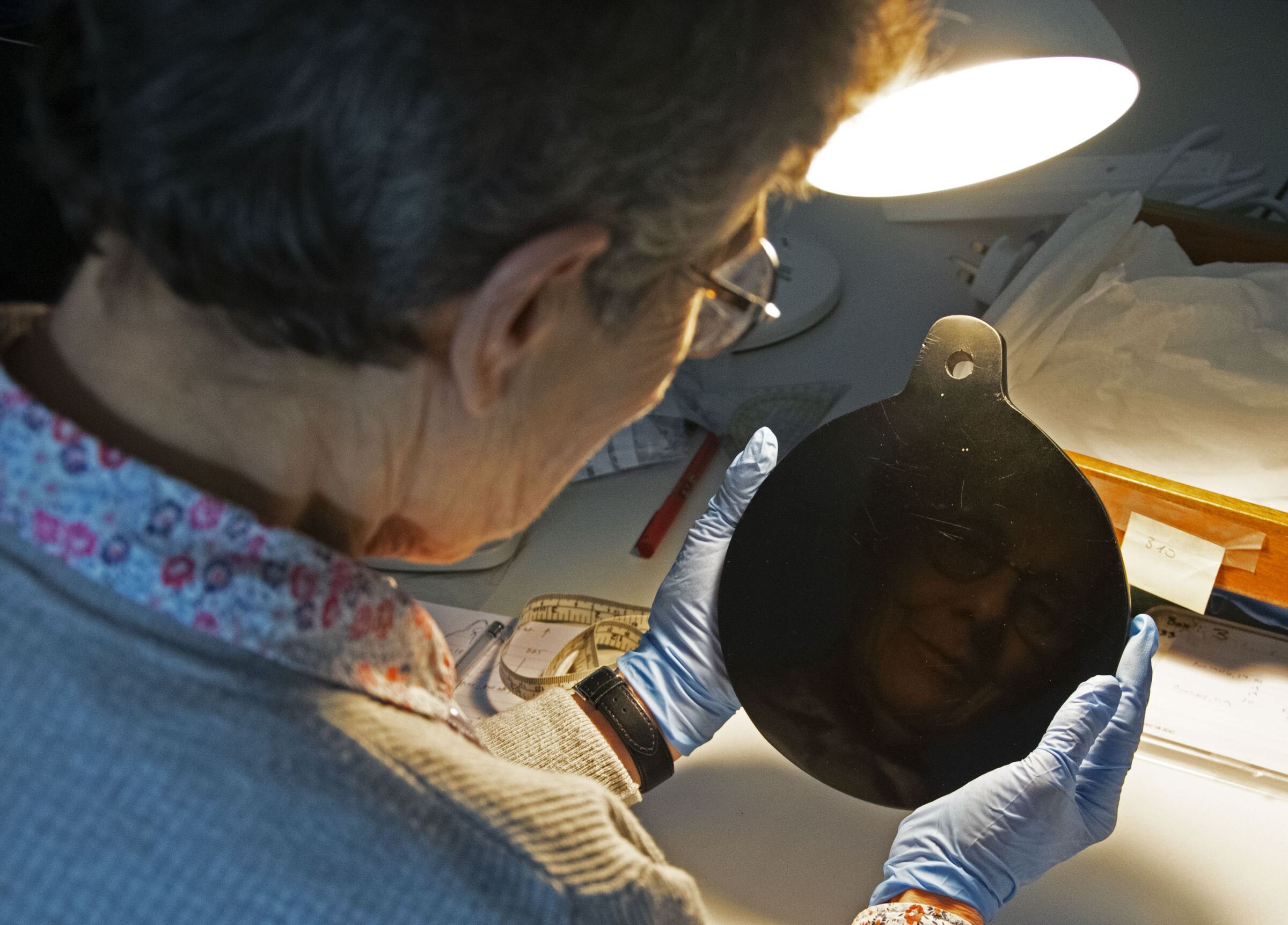
| Credit: Antiquity (2021). DOI: 10.15184/aqy.2021.132 |
New research has confirmed that an obsidian mirror used by John Dee, confidante to Queen Elizabeth I, to contact otherworldly spirits in his occult practices has Aztec origins.
Professor Stuart Campbell, from the University of Manchester, said, John Dee is a remarkable historical figure, a Renaissance polymath interested in astronomy, alchemy, and mathematics and confidante of Elizabeth I. Later, he became involved in divination and the occult, seeking to talk to angels through the use of scryers, who used artifacts like mirrors and crystals.
It had long been suspected that one of John Dee's scryers, an obsidian mirror now in the British Museum, had Aztec origins. However, with no records on how he obtained it, this was impossible to prove. Now, an international team of scientists, including Professor Stuart Campbell, have solved this mystery with geochemical analysis. Their research, published in the journal Antiquity, confirmed the Aztec origins of John Dee's mirror.
Their analysis involved bombarding the mirrors with X-rays, resulting in the objects also emitting X-rays, which allow scientists to measure the composition of the artifact. These are unique fingerprints that can be compared to obsidian samples to trace the origins of the material. The team studied four objects in the British Museum John Dee's mirror, two other Aztec mirrors, and a polished rectangular obsidian slab.
This method revealed that all four of the obsidian artifacts studied were made from Mexican obsidian exploited by the Aztecs. John Dee's mirror, along with another with a similar design, originated from near Pachuca. This obsidian source was heavily exploited by the Aztecs. To the Aztecs, obsidian also had spiritual significance. It could be used as part of medicinal practices, could act as a shield against bad spirits, and capture souls on its reflective surface.
One deity, Tezcatlipoca, is even named smoking mirror and often depicted wearing circular obsidian mirrors, as symbols of premonition and power. Such symbolic value may have made them appealing items for Europeans to collect and bring home as they conquered the Aztecs. The fact that mirrors were also often viewed as magical artifacts in Europe may have served as additional motivation.
Professor Campbell said, the 16th century was a period in which new exotic objects were being brought to Europe from the New World, and opening up exciting new possibilities in the intellectual world of the period.
These Aztec mirrors were novel and exotic items that found a place in many early collections. Stories about the meaning of the mirrors may have traveled with them and may have been what motivated John Dee to acquire his mirror when he encountered it in Europe.



0 Comments